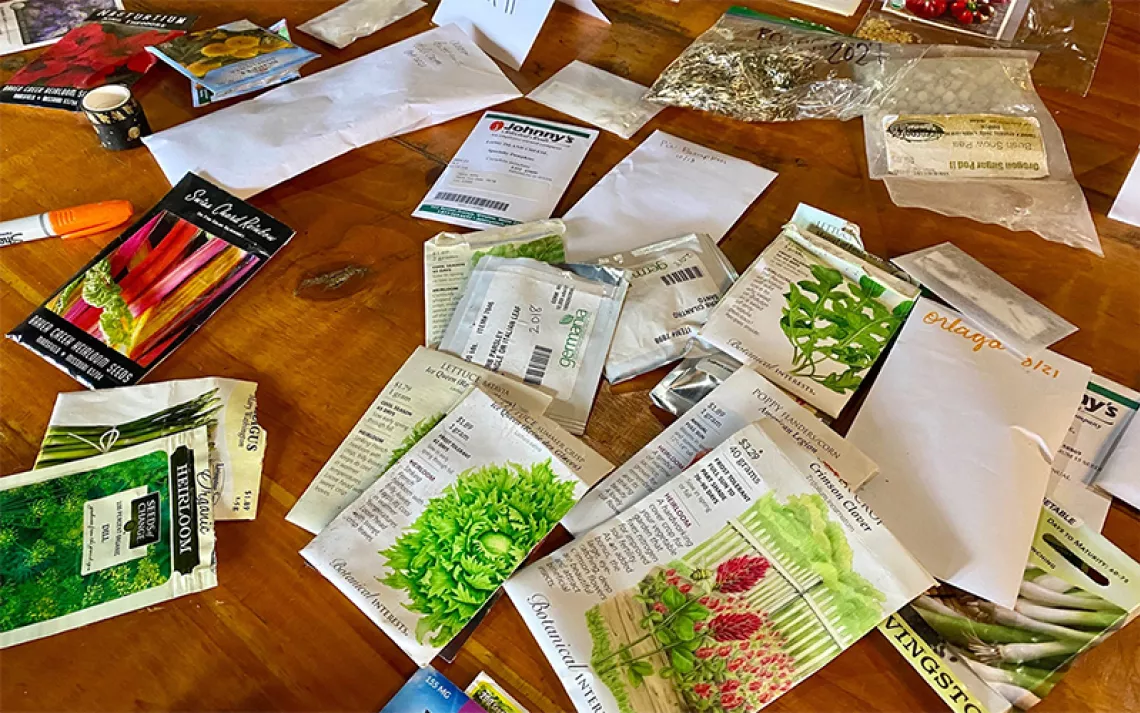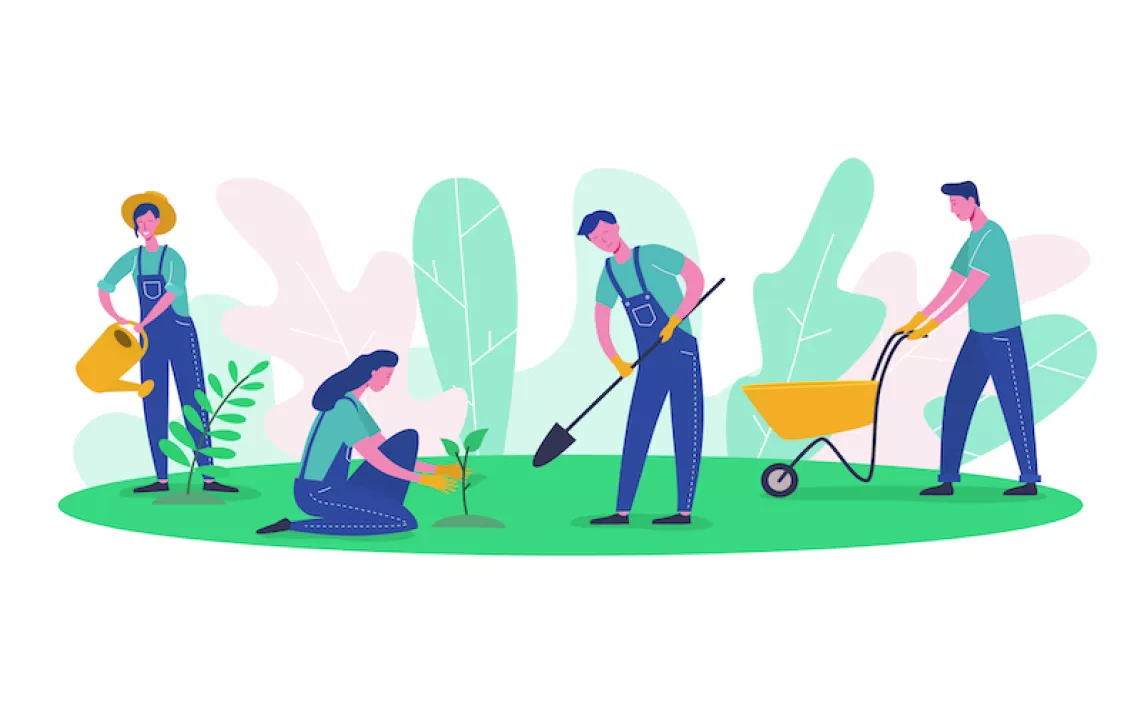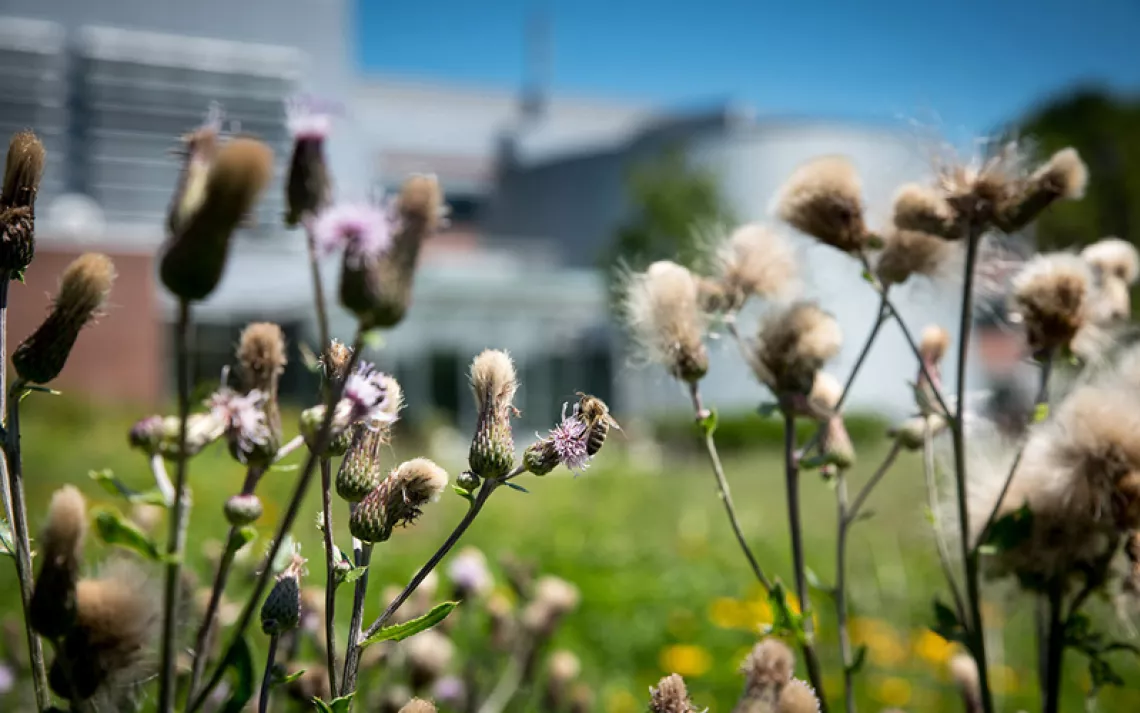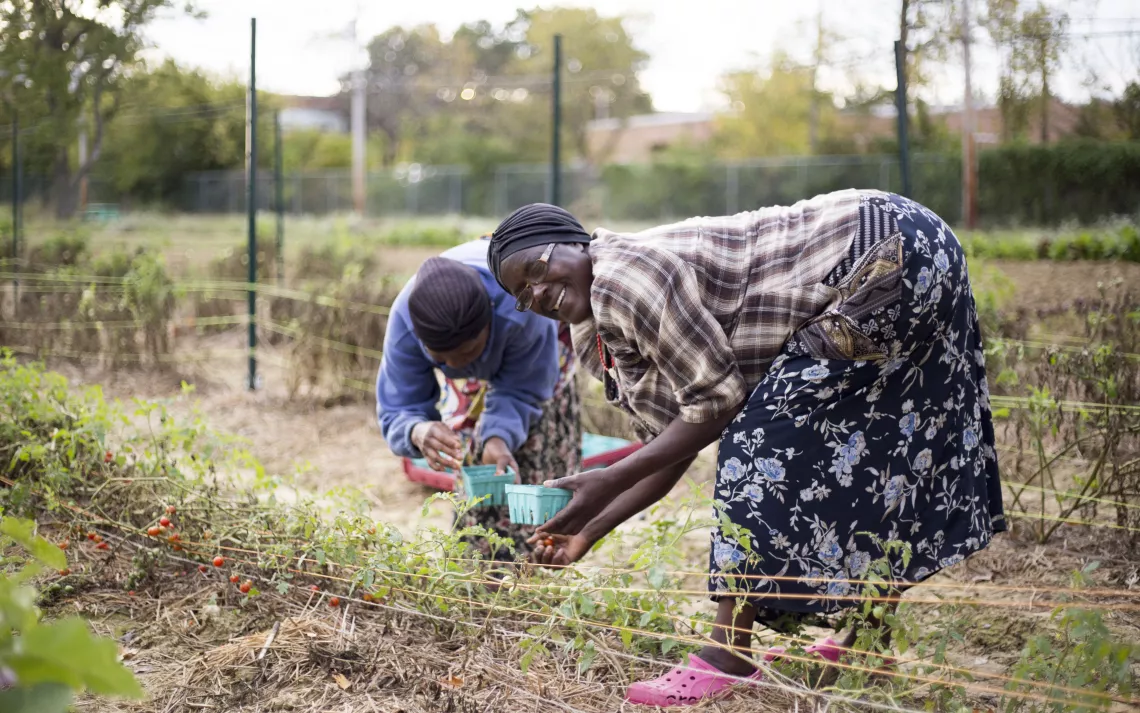The Art of Making Lush Community Food Forests Happen
The concept is gaining a foothold in the US
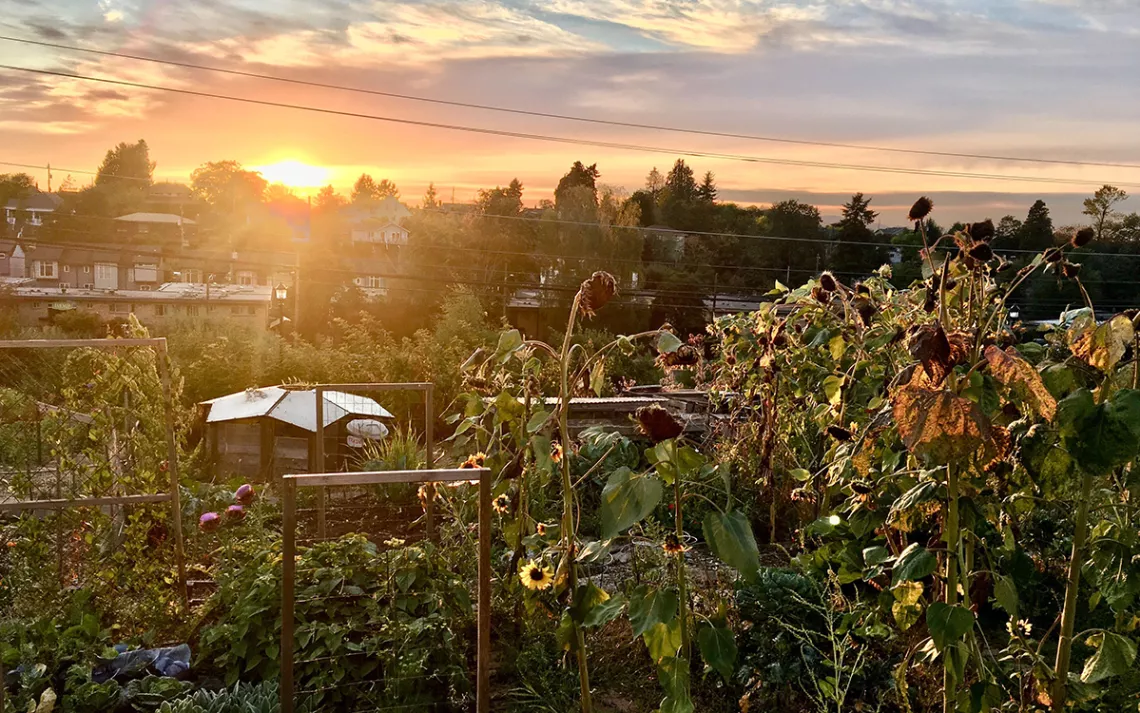
Beacon Food Forest at Sunset. | Photo by Elise Evans
Fewer than five miles from downtown Seattle, in the Beacon Hill neighborhood, lies a lush and edible food forest. Occupying a formerly unused space filled with invasive blackberries and grass, the Beacon Food Forest occupies five of the seven available acres. That land now results in everything from medicinal herbs to squash, kale, and fruit-bearing trees and shrubs. Beacon Food Forest also hosts an active children’s garden and BIPOC garden, as well as gardens dedicated to providing produce to food banks, a demonstration section, a gathering plaza, a compost area, and more.
While the exact amount of community food forests in the US is unknown—many exist but are not recorded in a general database—as of 2018, more than 70 were identified in public spaces throughout the United States according to The Community Food Forest Handbook.
Unlike community gardens, wherein a community member might rent a small plot to grow their own produce, a community food forest focuses on places that grow food in a way that mimics a forest ecosystem. Like community gardens, though, the community participates in the overall design and upkeep of the space, according to Catherine Bukowski, coauthor of The Community Food Forest Handbook.
“It's using ecosystem principles to grow more perennial foods,” she says, referencing the “food forest” part of her book’s title. The community aspect, Bukowski says, revolves around the whole community coming together to grow a space that is by, and for, the community—regardless of anyone’s ability to volunteer.
“Community gardens have limited space,” Bukowski adds. “And since each person is responsible for their own allotted area of that garden, it can only sustain a certain amount of people. Whereas with the community food forest, it’s being open to the public, and open to everyone to participate.”
Community comes first
Jenna Jasso is cofounder and community relations leader of Festival Beach Food Forest, Austin’s first publicly owned food forest. Community has been part of the conversation since the very beginning, Jasso says, and she advises anyone considering a community food forest to engage with the community early on.
“Build a community around it before you begin,” she says. “It takes a village to grow a forest.”
Conversation for the Festival Beach Food Forest initially began in 2012 and centered around the future of a 90-acre parkland, then filled with a lot of Bermuda grass, according to Jasso. The food forest now occupies a small part of that parkland and was strategically designed to be built on the west side of the Rebekah Baines Johnson (RBJ) Center at I-35 and the Colorado River. Jasso and her team wanted to help preserve affordability, diversity, and healthy food access in this area. (RBJ is home to many low-income seniors who have lived in East Austin for many decades.)
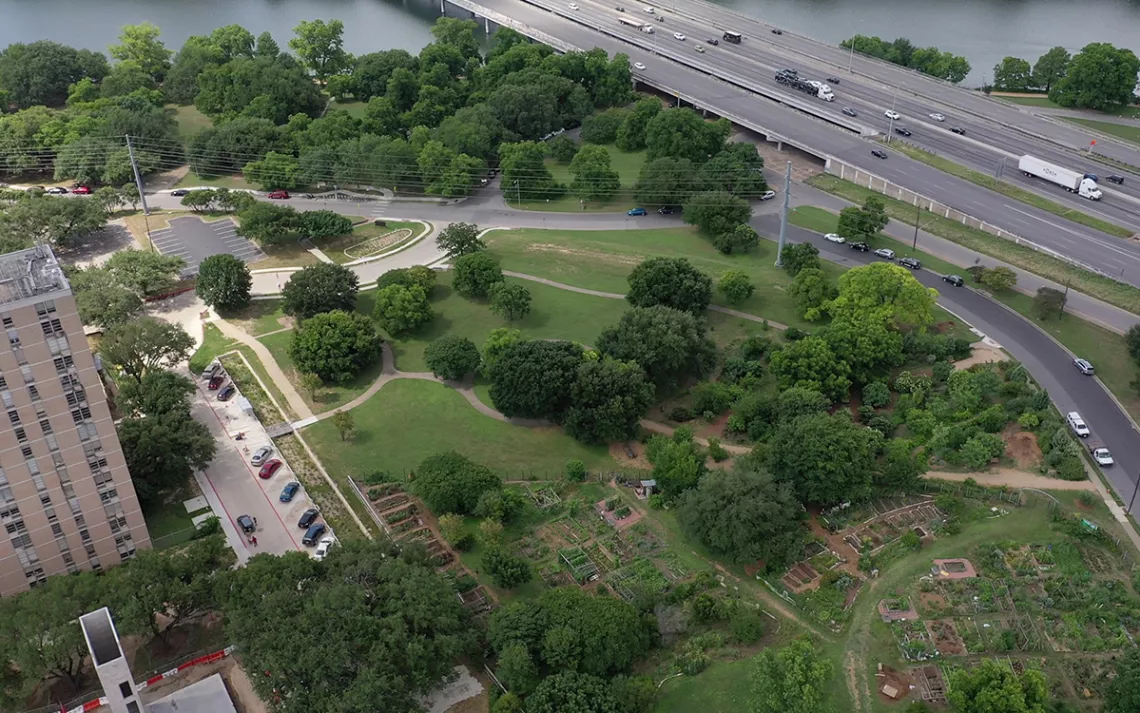
Festival Beach campus. | Photo by Mitch Wright
Just as important as building community? Providing a welcoming and accessible space for all.
Priya Marita Diaz, a former volunteer and current community relations director for Beacon Food Forest, is proud of the work she and volunteers have done over the past 11 years to create a welcoming and accessible garden and space for residents to gather, enjoy fellowship, and harvest the fruits of their labor—literally. The public park is bisected by a long, welcoming walking path. Between dawn and dusk, she says, anyone is welcome to harvest whatever they’d like from this space—and that applies 365 days a year, whether or not foragers have ever volunteered.
Beacon Food Forest’s first phase, launched in 2009, accounted for 1.75 acres of garden. The second phase began in 2018 and doubled the food forest to 3.5 acres. Part of that recent expansion included the addition of the BIPOC garden.
Diaz explains, “The BIPOC community garden is an affinity space for people of color to grow, and control, what's on that land and grow culturally appropriate foods—food that is meaningful and appropriate for different kinds of cultures.”
Growing more than food
Christina Schleich wants her Chicago neighborhood to rethink community gardening. Schleich is a lead organizer for the Avondale Gardening Alliance, a volunteer-based neighborhood organization dedicated to supporting its community in all things gardening—whether that means organizing spring seed swaps or educating urbanites on raising chickens. Among the programs the alliance offers is a community food forest called the Mindful Living Garden, subtly located just off Chicago’s busy I-94 expressway and along a one-way side street.
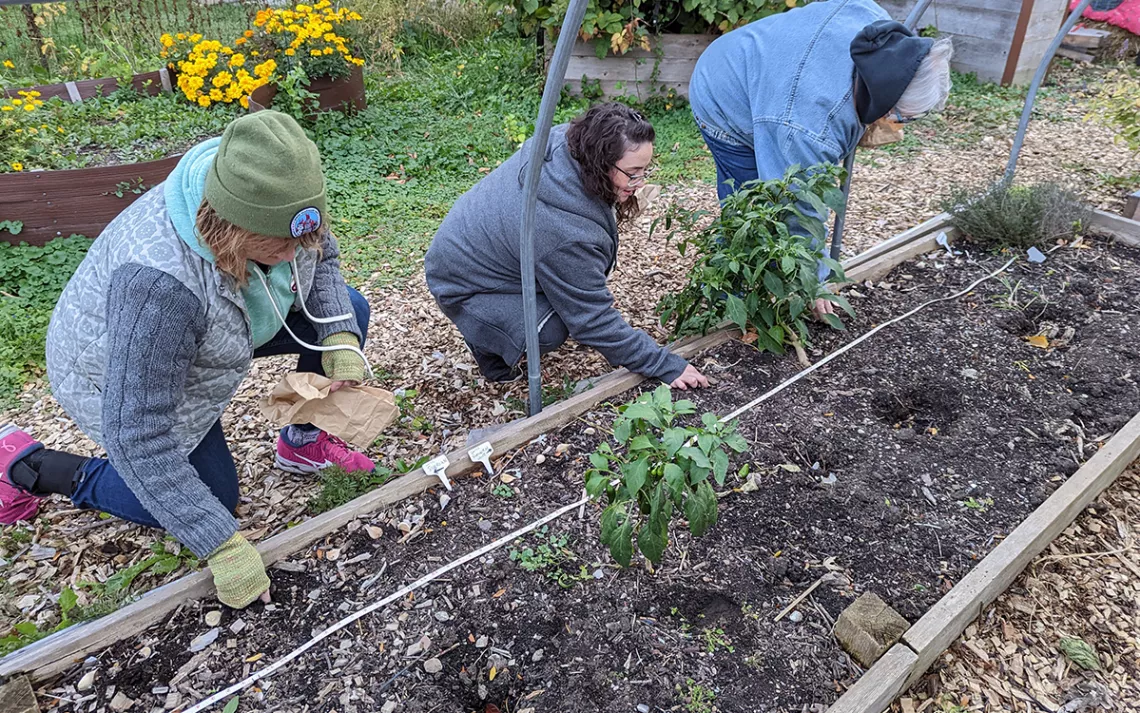
The Avondale Gardening Association's Mindful Living Garden's Garlic Planting Party. | Handout photo
Communities, like plants, have to be nurtured—and community organizers like Jasso, Diaz, and Schleich are growing community food forests as a way to help neighbors access healthy food while building relationships.
“Tons of research shows that exposure to nature has a huge amount of health benefits, both physical and mental,” Schleich says. “And what we want to do is have a pleasant nature reflecting public space for the immediate community where we can make green space available and also educate the community on how important it is.”
“Nature is not a luxury,” Schleich adds. “It's a necessity, even in urban day-to-day life.”
At the Mindful Living Garden, two large raised beds are dedicated to edible gardens and ameliorating food insecurity. As at Beacon Food Forest, Schleich insists that anyone who works in the garden is welcome to pick whatever they’d like—as the garden is part of their community as a whole, whether or not they volunteer. Surplus harvests are donated to Community Dinners, a meal program serving those in need, or the Love Fridge, a dedicated refrigerator through which people can share perishable food that would have been otherwise wasted with their neighbors.
Since community food forests are open every day and all day, it’s hard to pinpoint how many people are accessing them. But Diaz says she knows people are using Beacon Food Forest—and it’s making an impact. The other day, she noticed someone harvesting leaves from a fig tree. When Diaz asked why, the person said she was going to give them to her mother to make medicine to help her manage her diabetes. “That’s just one right random encounter with a random person who is making medicine out of fig leaves,” Diaz notes. “And that’s going on all the time.”
Starting a community food forest
As food prices continue to rise, food insecurity is becoming more prevalent throughout the country. Perhaps more than ever, eating locally is a priority.
A decade after its inciting conversation, Festival Beach Food Forest is an edible forest garden occupying two-thirds of an acre. Much of it is due to active and passionate volunteers, but it’s also the result of having a plan in place—something Jasso says is necessary to create a sustainable and long-term project (one that doesn’t always have the benefit of paid employees).
“We were ahead of ourselves on the inspiration and the approval and [benefitted from] 10 years of current 100 percent, volunteer, organized work,” Jasso says. (This is the first year Festival Beach Food Forest has employed paid workers, which Jasso admits wasn't really a part of the plan.)
While sweat equity will go far when it comes to development of a food forest, funding (of any sort) will of course go a long way to help sustain it. That funding can come in different ways—from grants to donations. Funding will need to be tapped for some of the biggest initial expenses, says Jasso, who recommends spending money on garden installations and payment for professionals who have “earthmoving experience” and/or machines to complete some of the more intensive work on the landscape. Buying trees and other plants, she says, are another major initial cost.
For any community food forest, Schleich can’t overemphasize the need for accessible water—and possibly an electrical outlet. The Mindful Living Garden has neither on its property—and resulting exercises in creativity have included solutions ranging from cat litter containers (as make-shift water jugs) and volunteers bringing battery-operated and fully charged power tools to get the jobs done.
A last note: Good signage is a key component of most community food forests. From the welcoming sign at an entrance to those placed near plants that are growing, signs help visitors orient themselves and connect them to the space. Mindful Living Garden regularly posts its Welcome sandwich board sign wherever volunteers are working, while Beacon Food Forest’s signage includes the origin of growing plants—as well as traditional uses, recommendations on when to harvest, and cooking and eating tips.
A word of caution
Some community organizers get tempted to adopt unused space without taking a lot of time or energy to find the rightful owner and secure permission. Jasso stresses that this is not a do-now-and-ask-for-forgiveness-later case. Once you plant trees, after all, it’s not like you can move them later if someone demands you leave their land because they never granted you permission in the first place.
For the project to be in alignment or in relationship with the city—or with whomever has domain over the land—securing that permission and partnership allows the community to make smarter and better decisions in the long run. “Having the support of the city from the beginning,” Jasso says. “I think that's pretty important.”
 The Magazine of The Sierra Club
The Magazine of The Sierra Club
